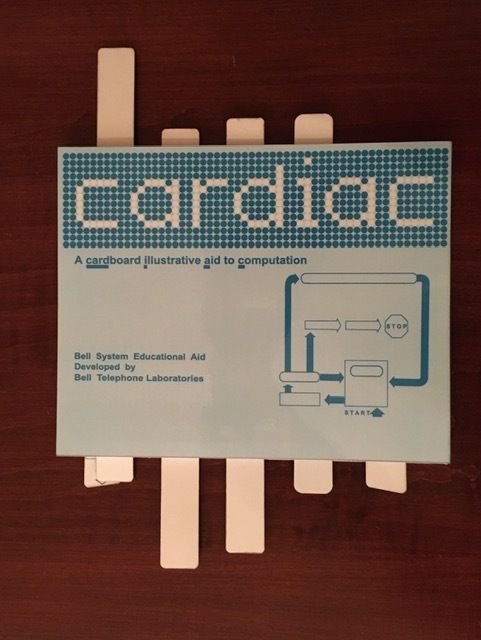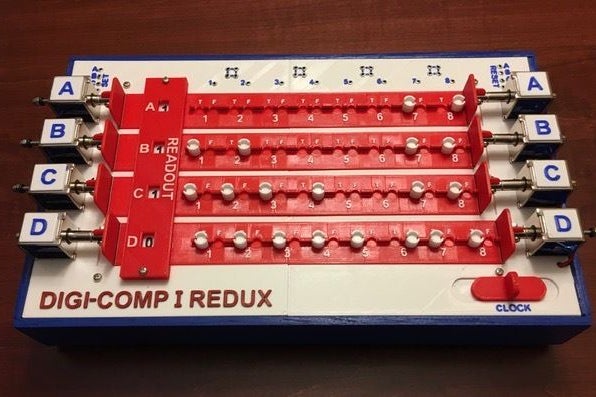Mike has been busy since then and has come up with more replicas of these early devices.
First here's a 3D printed replica of the Digi-Comp II marble computer. "Intended as an aid for teaching computer concepts, the Digi-Comp II can count, perform basic arithmetic, and obtain either the "1's" or '2's" complement of a number. The device can be run in auto mode where the balls are released automatically after each step of an operation until the operation is complete, or in manual mode where the user initiates each step."
Then there's the GENIAC (Electric Brain) Replica. "GENIAC, which stood for "GENIus Almost-automatic Computer", was an educational toy billed as a "computer" sold from 1955 through the sixties for about $20. Designed and marketed by Edmund C. Berkeley, with Oliver Garfield, it was widely advertised in science and electronics magazines. GENIAC provided many youths of the day with their first exposure to computer concepts and Boolean logic."
And then there's the CARDIAC (CARDboard Illustrative Aid to Computation) Replica. "The CARDIAC Instructable presented here is not a computer, it's a device to help you understand how a computer works. You the user will: decode instructions by sliding panels up and down, move the program counter "lady bug" from one memory location to the next, perform the duties of an arithmetic logic unit (ALU), read inputs from one sliding strip, and write output results to another (with a pencil). Along the way you will you will learn the internal workings of a typical Von Neumann architecture computer. Some fairly sophisticated programs can be executed (by you manually remember) on the CARDIAC. Stacks, subroutines, recursion, and bootstrapping for example can all be demonstrated."
Finally, here's his latest and likely most sophisticated project, the Digi-Comp 1 Redux. He says:
Today's Instructable is a little different. It's a brand new machine that is a "mashup" of the following classics:
If you want to try building one of these, you will need a 3D printer and a moderate amount of mechanical ability and tools. They would probably be ideal projects for a high school computing class or computer group.I wanted my new machine to have the wonderful ascetic of these vintage models that I know and love. I want people to believe that it could in fact have been from the 50's or 60's. However since it is not a replica I didn't feel compelled to limit myself to the technologies of the era. What does this mean? Read on and find out.
- Digi-Comp I: My new design is mostly based on the mechanics and "programming model" from this machine.
- Digi-Comp II: The look and feel of the new machine came from both my Digi-Comp II replica and the Digi-Comp I.
- Minivac 601: From the Minivac 601 I used the old telephone switchboard patch cord mechanism to connect the solenoids to the proper logic elements.
- GENIAC Redux: The GENIAC Redux replica used magnetic reed switches and magnets to implement the logic elements. My new design follows suit.




No comments:
Post a Comment